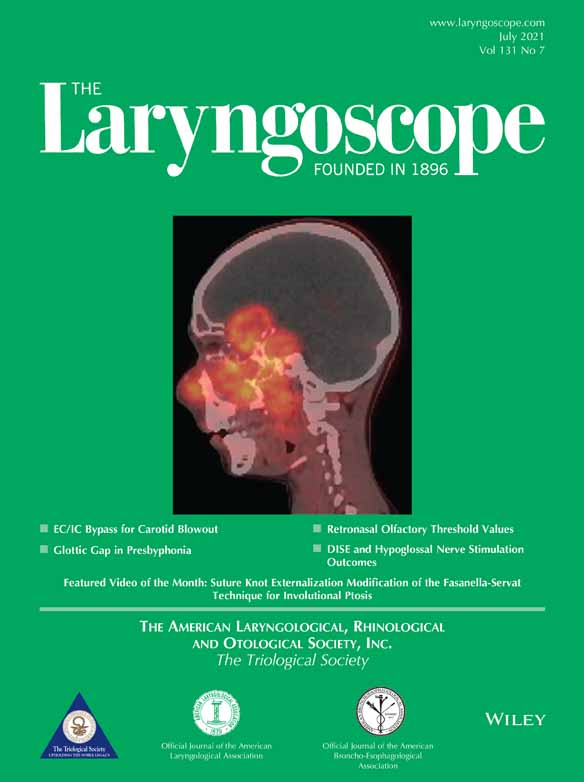Drug-Induced Sleep Endoscopy and Hypoglossal Nerve Stimulation Outcomes: A Multicenter Cohort Study
Editor's Note: This Manuscript was accepted for publication on December 29, 2020.
The study was supported by a Health Services Research Grant from the American Academy of Otolaryngology—Head and Neck Surgery Foundation and an Investigator-Initiated Research Support grant from Inspire Medial Systems, Inc. This work was also supported by grants UL1TR001855 and UL1TR000130 from the National Center for Advancing Translational Science (NCATS) of the U.S. National Institutes of Health. The content is solely the responsibility of the authors and does not necessarily represent the official views of the National Institutes of Health.
The authors have no other funding, financial relationships, or conflicts of interest to disclose.
Abstract
Objectives/Hypothesis
To determine the association between findings of blinded reviews of preoperative drug-induced sleep endoscopy (DISE) and outcomes of hypoglossal nerve stimulation (HNS) for obstructive sleep apnea (OSA).
Study Design
Cohort study.
Methods
A retrospective, multicenter cohort study of 343 adults who underwent treatment of OSA with HNS from 10 academic medical centers was performed. Preoperative DISE videos were scored by four blinded reviewers using the VOTE Classification and evaluation of a possible primary structure contributing to airway obstruction. Consensus DISE findings were examined for an association with surgical outcomes based on therapy titration polysomnogram (tPSG). Treatment response was defined by a decrease of ≥50% in the apnea-hypopnea index (AHI) to <15 events/hour.
Results
Study participants (76% male, 60.4 ± 11.0 years old) had a body mass index of 29.2 ± 3.6 kg/m2. AHI decreased (35.6 ± 15.2 to 11.0 ± 14.1 events/hour; P < .001) on the tPSG, with a 72.6% response rate. Complete palate obstruction (vs. none) was associated with the greatest difference in AHI improvement (−26.8 ± 14.9 vs. −19.2 ± 12.8, P = .02). Complete (vs. partial/none) tongue-related obstruction was associated with increased odds of treatment response (78% vs. 68%, P = .043). Complete (vs. partial/none) oropharyngeal lateral wall-related obstruction was associated with lower odds of surgical response (58% vs. 74%, P = .042).
Conclusions
The DISE finding of primary tongue contribution to airway obstruction was associated with better outcomes, whereas the opposite was true for the oropharyngeal lateral walls. This study suggests that the role for DISE in counseling candidates for HNS extends beyond solely for excluding complete concentric collapse related to the velum.
Level of Evidence
3 Laryngoscope, 131:1676–1682, 2021




